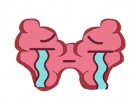最有效的抗癌药物Lodamin
导读:美国科学家成功研制出目前为止最有效的抗癌药物Lodamin.该药物可以口服,它是由抗癌效果最显著的试剂TNP-470发展而来。专家介绍,目前Lodamin的抗癌效果已成功在老鼠抗癌实验中获得。
近日美国科学家成功研制出目前为止最有效的抗癌药物Lodamin.该药物可以口服,它是由抗癌效果最显著的试剂TNP-470发展而来。据专家介绍,目前Lodamin的抗癌效果已成功的在老鼠抗癌实验中获得了证实;如果它还能在接下来的人体抗癌实验中获得成功,那么Lodamin或许将彻底终结人类的“闻癌色变”的历史。该抗癌药物名叫Lodamin,由于其无毒而且可以口服,所以专家认为该试剂将极有可能在不久之后被广泛推广。奥弗拉-本尼(Ofra Benny)博士是该药物研发的主要负责人,她认为,Lodamin既可以用于作为一种癌症预防性试剂,也可以作为防止癌症进一步扩散的治疗药物。肿瘤中毛细血管不断为肿瘤提供营养物质,而Lodamin可以抑制住肿瘤细胞中毛细血管的生长,这样就能十分有效的防止恶性肿瘤的生成与病症发作。此外,Lodamin还能够对由于年老所引起的关节炎中的毛细血管异常生长等症状进行有效的缓解。
本尼表示,Lodamin是由TNP-470改进后的生成品,而TNP-470则是经过医学专家们长达20多年的不断研究后的成果。在临床医疗实践中,TNP-470对种类繁多的癌症疾病有着效果显著的疗效。然而由于TNP-470在大剂量地被注入患者体内后,会产生泌尿系统的副作用,因此TNP-470在上世纪90年代被暂停使用。但是Lodamin继承了TNP-470强大的抗癌疗效;不仅如此,医学人员经过检验后证实,Lodamin对人体没有任何神经性毒害的副作用。此外,相比较于其它种类繁多的抗癌药物来说,Lodamin不仅可以预防、抑制种类繁多的癌症病症;而且它也可以极为方便地被患者服用,而这一切则都是其它抗癌药物所无法比拟的巨大优势。据专家介绍,Lodamin可以有效的抑制由于遗传基因刺激而导致的毛细血管恶性生长,而且它还能够有效地控制住在人体肝脏中的许多癌症并发症,而在Lodamin被研制出以前,医学界还没有任何药物能够对该并发症进行有效地治疗。
由于TNP-470抗癌效果显著,但副作用却极大。众多医学专家们多年以来对TNP-470进行着不断的改良。而就在几年之前,TNP-470的改良也取得了很大的进展。时隔多年,本尼再次将目光集中在了TNP-470上。在试验过程中,她将两个聚合体与TNP-470相连接,之后她不断的变换聚合体材料的长度,以求能够达到最稳定的状态。经过不懈的努力,她最终找到了能够达到整体最稳定的聚合体。该聚合体能够防止TNP-470不被胃中的强酸环境所腐蚀,最终达到可以口服的目的。该项目的负责人之一安博尔(Ingber)表示,“TNP-470在医学实践的前两个阶段获得了巨大的成功,它开创了一种全新的对抗癌症的思维模式。然而由于其采用的是传统的放射性化学疗法,各种巨大的副作用当然也就不可避免的产生出来。我们所要做的就是在不改变抗癌疗效的同时,使其副作用达到最小。”
A drug developed using nanotechnology and a fungus that contaminated a lab experiment may be broadly effective against a range of cancers, U.S. researchers reported on Sunday.
The drug, called lodamin, was improved in one of the last experiments overseen by Dr. Judah Folkman, a cancer researcher who died in January. Folkman pioneered the idea of angiogenesis therapy -- starving tumors by preventing them from growing blood supplies.
Lodamin is an angiogenesis inhibitor that Folkman‘s team has been working to perfect for 20 years. Writing in the journal Nature Biotechnology, his colleagues say they developed a formulation that works as a pill, without side-effects.
They have licensed it to SynDevRx, Inc, a privately held Cambridge, Massachusetts biotechnology company that has recruited several prominent cancer experts to its board.
Tests in mice showed it worked against a range of tumors, including breast cancer, neuroblastoma, ovarian cancer, prostate cancer, brain tumors known as glioblastomas and uterine tumors.
It helped stop so-called primary tumors and also prevented their spread, Ofra Benny of Children‘s Hospital Boston and Harvard Medical School and colleagues reported.
"Using the oral route of administration, it first reaches the liver, making it especially efficient in preventing the development of liver metastasis in mice," they wrote in their report. "Liver metastasis is very common in many tumor types and is often associated with a poor prognosis and survival rate," they added.
‘ALMOST CLEAN‘ LIVERS
"When I looked at the livers of the mice, the treated group was almost clean," Benny said in a statement. "In the control group you couldn‘t recognize the livers -- they were a mass of tumors."
The drug was known experimentally as TNP-470, and was originally isolated from a fungus called Aspergillus fumigatus fresenius.
Harvards‘s Donald Ingber discovered the fungus by accident while trying to grow endothelial cells -- the cells that line blood vessels. The mold affected the cells in a way known to prevent the growth of tiny blood vessels known as capillaries.
Ingber and Folkman developed TNP-470 with the help of Takeda Chemical Industries in Japan in 1990.
But the drug affected the brain, causing depression, dizziness and other side-effects. It also did not stay in the body long and required constant infusions. The lab dropped it.
Efforts to improve it did not work well. Then Benny and colleagues tried nanotechnology, attaching two "pom-pom"-shaped polymers to TNP-470, protecting it from stomach acid.
In mice, the altered drug, now named lodamin, went straight to tumor cells and helped suppress melanoma and lung cancer, with no apparent side effects, Benny said.
All untreated mice had fluid in the abdominal cavity, and enlarged livers covered with tumors. Mice treated with lodamin had normal-looking livers and spleens, the researchers said.
Twenty days after being injected with cancer cells, four out of seven untreated mice had died, while all treated mice were still alive, Benny‘s team reported.
"I had never expected such a strong effect on these aggressive tumor models," she said. The researchers believe lodamin may also be useful in other diseases marked by abnormal blood vessel growth, such as age-related macular degeneration.
文章转载于网络,仅供阅读浏览,未做任何商业用途,如有侵权请联系删除!
相关推荐:

在这里,掌握健康资讯
扫描左侧二维码即可添加抗癌健康网官方微信;健康之路 与你同行
肾癌更多>>

肾癌起源于泌尿小管上皮。肾癌约占成人恶性肿瘤的80%-90%, 是成人最常见的肾脏肿瘤。[详情]
热文欣赏更多>>
健康阅读
推荐欣赏














